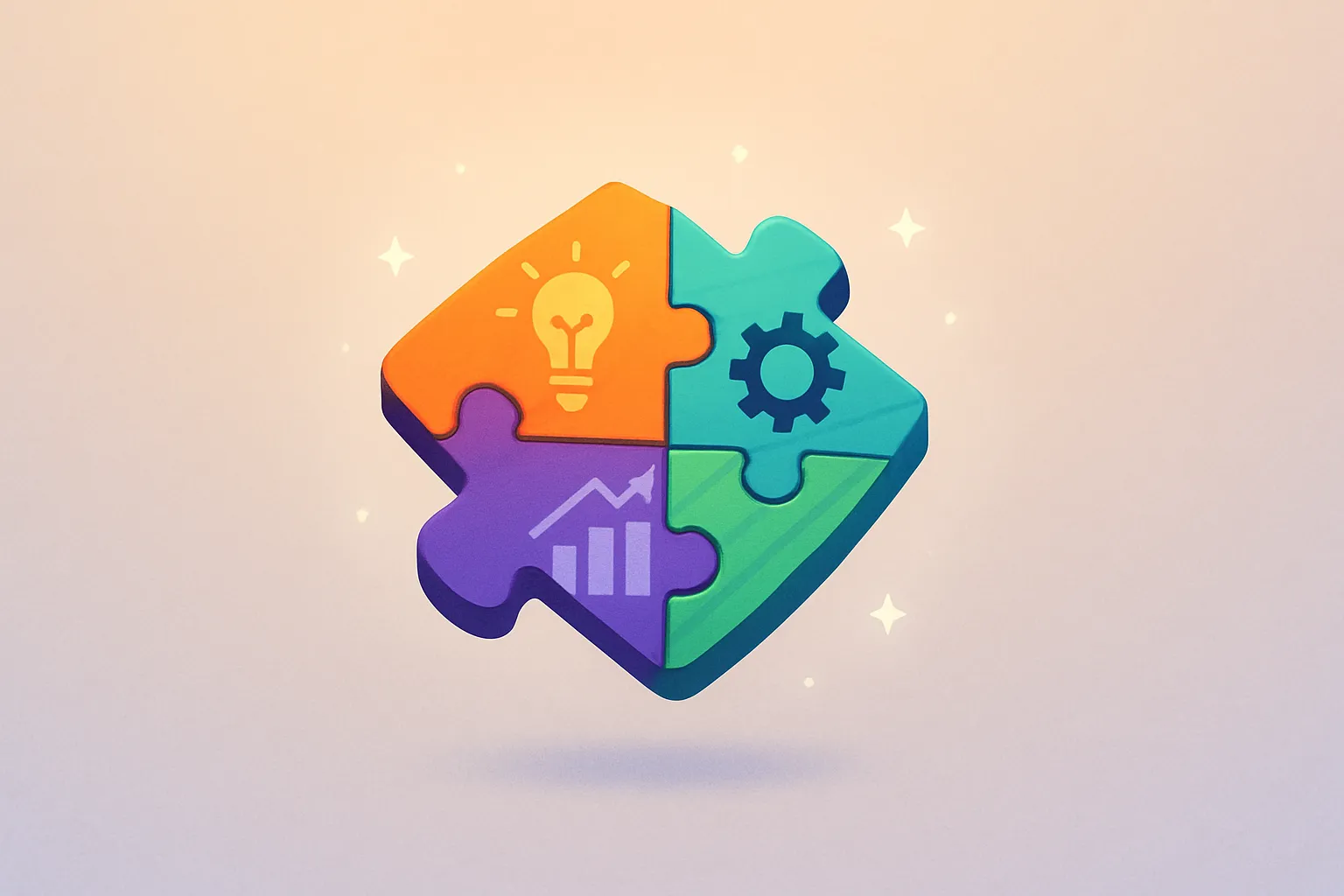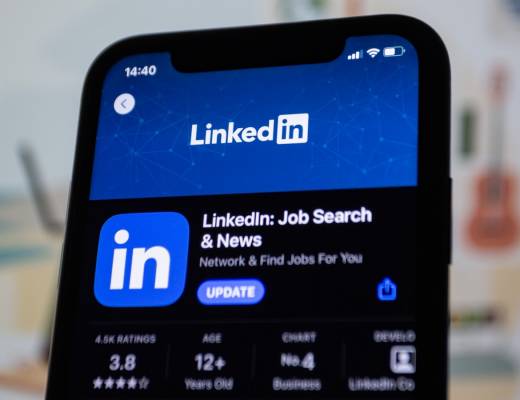We asked industry experts to share an example of a time when they used their unique skills and talents to make a significant contribution to a project or team effort. Learn how they identified their strengths and how they leveraged them for success. From aligning human potential to creating practical AI solutions, these strategies can be applied to enhance your own professional growth and team performance.
- Transform Leadership Through Human Alignment
- Translate Technical Issues Into Business Solutions
- Leverage Unique Abilities for Measurable Growth
- Bridge Design and Development with Vibe Coding
- Connect Ideas to Create Practical AI Solutions
- Streamline Marketplace Operations with Systems Thinking
- Shape Roles Around Strengths for Business Innovation
- Turn Weaknesses Into Core Strengths Through Learning
- Use Empathy to Overcome Creative Roadblocks
- Accelerate Projects by Aligning Team Goals
- Bridge Technical Details with Customer-Focused Messaging
- Drive Change Through Data Synthesis and Simplification
- Cut Through Fog to Move Projects Forward
- Create Systems to Solve Organizational Bottlenecks
- Lead Complex Projects with Structured Communication
- Boost Productivity Through Creative Problem-Solving
- Empower Teams with Visual Decision-Making Tools
- Align Multi-Channel Strategies for Improved ROI
18 Stories of Leveraging Unique Skills for Team Success
Transform Leadership Through Human Alignment
Some people lead with titles. I lead with transformation.
One of the most pivotal moments in my career came when I stepped into a newly promoted
leadership role during a time of high-pressure hiring and team burnout. Morale was low, targets were high, and we were being asked to produce with limited resources — and even less clarity. I knew if I approached this the “traditional” way — more pressure, more meetings, more grind — I’d lose both the team and myself.
So I paused.
Instead of diving straight into the metrics, I started with something else: human alignment. I gathered my team, listened deeply, and did what I do best — connect patterns, reframe challenges, and activate people’s personal power.
I identified that my unique gift wasn’t just recruiting talent — it was recognizing where people shine and giving them permission to own it. I created custom
growth plans that aligned each recruiter’s strengths with our team mission. I built workflows that reduced duplication, restored energy, and sparked a new sense of ownership across the board.
Within weeks, performance started to shift.
Within months, we exceeded our goals.
And within a year, we became the top-performing recruiting pod in our division — not because we worked harder, but because we worked truer.
How did I identify my strengths? Through years of navigating duality. I’ve always had one foot in
corporate and one foot in creative entrepreneurship. I know what it’s like to wear multiple hats, lead with both heart and logic, and find clarity in chaos. Those
“soft skills” people once underestimated — emotional intelligence, storytelling, intuition, pattern-mapping — became my superpowers.
I leveraged them not just to hit KPIs, but to create a culture where people felt safe to rise. Where strategy met soul. Where business didn’t just happen — it moved.
What I’ve learned is this: your unique strengths are usually hidden in the parts of you the world told you to tone down. Once you own them, everything changes. Not just how you show up — but how others level up around you.
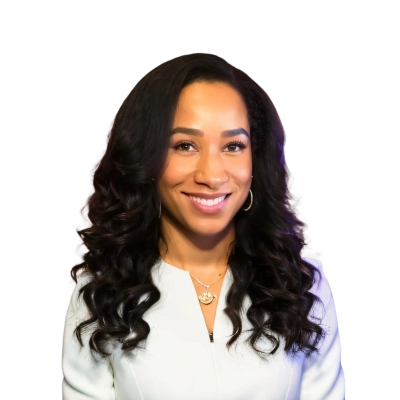 Janae Johnson
Janae Johnson
Career Strategist, Business Coach & Talent Acquisition Leader, JNL Career Services & CorpreneuX
Translate Technical Issues Into Business Solutions
After 20+ years in IT, I’ve learned that my biggest strength is translating complex technical problems into business solutions that non-technical leaders can actually understand and get excited about.
A perfect example was when a local manufacturing client was hemorrhaging money from constant system downtime, but their CEO kept rejecting IT upgrade proposals. The previous IT consultants kept throwing around terms like “network infrastructure modernization” and “redundancy protocols.” I realized the real issue wasn’t technical — it was communication.
I spent time on their factory floor, timed their actual downtime incidents, and presented it differently: “Every hour your systems are down costs you $3,200 in lost production. Our solution pays for itself in 6 weeks.” Instead of talking about servers and switches, I showed them a simple chart comparing
downtime costs to upgrade investment.
The result? They approved the project immediately and saw an 89% reduction in downtime within 90 days. The key was recognizing that my technical expertise was only valuable when paired with business translation skills. Now I always start client conversations by understanding their profit pressures first, then work backward to the technical solution.
 Mitch Johnson
Mitch Johnson
CEO, Prolink IT Services
Leverage Unique Abilities for Measurable Growth
I realized pretty early that trying to be the “do-it-all” founder was actually slowing us down. My real skillset was
spotting opportunities no one else saw, getting a project from zero to one, and energizing people around a big goal. It wasn’t grinding through repetitive or maintenance-heavy tasks. I only got specific about this after pushing through Dan Sullivan’s Unique Ability framework. That meant taking personality tests, doing StrengthsFinder, writing weekly reflection notes, and honestly asking my direct reports and colleagues where I truly moved the needle. Patterns jumped off the page. They said, “You get things started. You get people out of their comfort zone.” It clicked.
Once I doubled down on that, everything changed. Instead of clinging to every role and choking on admin work, I carved out my own “operating system” focused on launching new initiatives, pitching bold clients, and teaching junior leaders the kind of high-leverage thinking that scales. The impact was impossible to miss. Within one year, our revenue jumped from roughly $5 million to over $8 million, with no increase in payroll. Projects that once staggered along started moving on six-week timelines instead of six months.
The best move wasn’t just stepping into my unique lane; it was who I hired next. I realized surrounding myself with people like me was the wrong way to go, so for every similar visionary self-starter, I matched them with someone obsessed with process, deadlines, and details. These implementers became our silent engines. Wild ideas got filtered, executed, measured, and shipped. And little old us was beating agency competitors three times our size to the punch.
A core insight is that knowing your strengths only matters if you architect a team that minimizes your blind spots. If you’re great at vision, find people who thrive on routine. If you love detail, partner with someone who drags projects into the light. Gallup’s research pegs team profit growth at over 20% when skills are mapped this way, but you’ll feel it even faster in project delivery and morale.
 Steve Morris
Steve Morris
Founder & CEO, NEWMEDIA.COM
Bridge Design and Development with Vibe Coding
When I recognized our team was spending too much time on the mockup-to-deployment process, I decided to experiment with vibe coding using V0 for UI mockups. My background in marketing had taught me to look for efficiency gains, and I noticed that our previous method of using screenshots and Canva was creating bottlenecks. I identified my strengths at the intersection of marketing intuition and willingness to adopt new technical approaches, which positioned me uniquely to bridge the gap between design concepts and technical implementation.
Working closely with our development team, I helped establish a new workflow that dramatically reduced our mockup-to-deployment time to under 30 minutes. The success of this initiative wasn’t just about the time saved but also about improving communication between our marketing and development departments. By leveraging my understanding of both worlds, I was able to translate requirements more effectively and create a system that worked for everyone involved.
This experience reinforced my belief that sometimes the most valuable contributions come from applying existing skills in unexpected ways and being willing to step outside traditional role boundaries.
 Adrian James
Adrian James
Product Manager, Featured
Connect Ideas to Create Practical AI Solutions
Find the intersection of what you love doing and what the market desperately needs.
Early in my career as an AI company leader, I realized that my greatest asset wasn’t so much my technical skills as my ability to connect ideas seemingly at odds with one another into practical solutions — which I refer to as “concept bridging.” When generative AI exploded onto the scene, I realized the world was changing quickly, so I doubled down on my own speed-learning sprints. I traced the foundation of my knowledge in machine learning to newer ideas like transformer architectures and prompt engineering. I drew connecting lines between traditional NLP approaches and nascent GenAI wizardry. Rather than waiting for official courses or documentation, I developed side experiments — analyzing user sentiment, generating marketing copy, etc., to demonstrate value in tangible environments.
This hands-on, test-and-learn approach came to my aid when I joined a team rolling out an AI-powered content tool. I translated technical terms into actionable insights for our engineers and marketing audience, enabling us to build a model that supported creativity and protected the brand. Exactly two months ahead of schedule, our product hit the market and landed us an enterprise client. My advice? Find the intersection of what you love doing and what the market desperately needs. Then, conduct small experiments to turn curiosity into results. It’s the quickest route I know of for converting strengths into strategic impact.
 John Pennypacker
John Pennypacker
VP of Marketing & Sales, Deep Cognition
Streamline Marketplace Operations with Systems Thinking
One example that stands out is when we were expanding our marketplace and saw that brands were taking longer and longer to find the proper agencies. I’ve always liked systems thinking and process design, so I looked into the lead flow data to identify the root causes of the issues. I discovered that we were handling all leads the same, without considering their urgency, the type of service required, or whether the agency was available.
I worked with our operations and development teams to change the way we qualify leads and send them to the most relevant agency partners. We improved the intake process, added priority tiers, and behavioral filters so that we could match based on real business needs instead of just category labels. In just a few months, we witnessed a noticeable improvement: connection times were shorter, lead quality scores were higher, and both sides of the marketplace were happier.
The effect made me think that perhaps the best way to help is to look at the whole system, not just the symptoms. That means using my skills in pattern recognition and simplification to solve a complex, high-growth problem. It wasn’t showy, but it created a lasting difference.
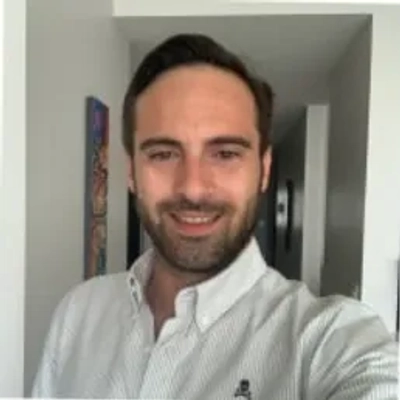 Gianluca Ferruggia
Gianluca Ferruggia
General Manager, DesignRush
Shape Roles Around Strengths for Business Innovation
Joining a Title Insurance Broker after coming from a background in financial technology was marked by a significant disconnect. Years of training in business transformation and innovation had placed me in a primarily operational and legal role, with a range of skills left underutilized. Before long, I realized that rather than try to force-fit myself into the role, I could shape the role around my strengths and deliver value.
I took a step back to envision how financial technology could reshape my workplace and presented a vision to the President of our firm of a new digital offering based around an ancillary service offered by the firm: 1031 exchanges. From that meeting, BlueLion was born, and I was quickly chartered to lead not just the development of the technology platform, but the business unit as a whole.
In doing so, I find myself energized every day at work as I take full advantage of my skillset.
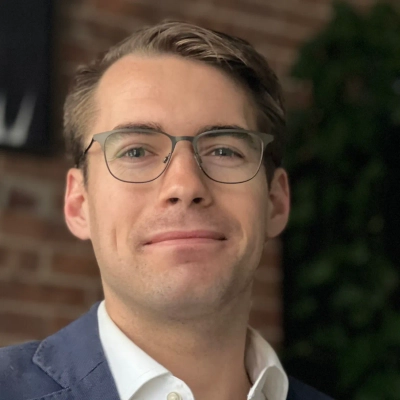 Nick Henault
Nick Henault
Managing Director, BlueLion 1031
Turn Weaknesses Into Core Strengths Through Learning
One of the most meaningful contributions I’ve made to our team came from my ability to learn quickly.
During the early days of our company, I had to confront a weakness: I was bad at sales — and I knew it.
I wasn’t exactly a smooth talker and was scared to pitch my business. But once I realized how much that was holding the company back, I committed to getting better. I studied, practiced, listened to recordings of failed calls, and kept going until I could not only sell but get good at it.
That shift alone doubled our call-to-close rate from 30% to 60% and helped me discover how powerful it can be to turn a weakness into a core strength.
 Stephen Greet
Stephen Greet
CEO & Co-Founder, BeamJobs
Use Empathy to Overcome Creative Roadblocks
I once worked with a client who refused to commit to their homepage wireframe, delaying development. Instead of pushing, I interviewed their three best customers and mapped the emotional journey of their conversion. Then I turned that journey into a homepage layout that felt authentic, not generic. The client signed off immediately, and bounce rates dropped by 32 percent.
I learned that empathy is one of my strongest skills, especially in high-friction creative processes. I use it to anticipate what people fear, hope, or doubt when they see an asset. That lens helps move people from indecision to clarity without pressure. It’s now a key tool in our UX and brand work.
 Jason Hennessey
Jason Hennessey
CEO, Hennessey Digital
Accelerate Projects by Aligning Team Goals
Early in my career, a critical project was falling behind due to misaligned communication between cross-functional teams. Recognizing that my strength lies in strategic clarity and cross-cultural collaboration, I stepped in to reframe the workflow. Instead of overhauling processes, I focused on aligning individual team goals with the bigger picture, facilitating weekly syncs that prioritized decision-making over status updates. That shift alone accelerated the project timeline by nearly 30% and improved team engagement.
The ability to identify strengths often comes from paying close attention to recurring patterns — where others seek input, what tasks feel instinctive, and where results consistently follow effort. In this case, observing how I naturally gravitated toward untangling complex dynamics helped build the confidence to lead when it mattered most. The key wasn’t being the loudest voice in the room — it was understanding what was missing and knowing how to fill that gap effectively.
 Anupa Rongala
Anupa Rongala
CEO, Invensis Technologies
Bridge Technical Details with Customer-Focused Messaging
In my current role as a marketer in the SaaS space, one of the most significant contributions I’ve made was leading the rebranding and repositioning of our company’s website. My background in both commercial
real estate and software marketing provided me with a unique perspective, allowing me to understand both the technical aspects of our product and how finance and real estate teams operate.
I identified my strengths by noticing that I could translate complex software features into simple, customer-focused messaging, something our team had struggled with. I leveraged this by collaborating closely with our product and sales teams to understand real customer pain points, then rewrote our website copy and restructured pages to make it easier for prospects to see the value our software offers.
The result was a more modern and accessible website that directly addressed customer needs, leading to improved lead quality and higher conversion rates. This experience reinforced that my strength lies in bridging the gap between technical details and customer relevance, a skill I now apply across various marketing projects.
 Brooke Colglazier
Brooke Colglazier
Marketing Manager, Spacebase
Drive Change Through Data Synthesis and Simplification
We once struggled with a large-scale reporting project that involved reconciling multiple analytics sources and attribution tools. I built a unified tracking dashboard using Looker Studio with segment logic tied to business goals. That tool ended up being adopted by every account manager and integrated into client presentations. It eliminated hours of confusion and improved retention rates.
Data synthesis is one of my core skills. I see through noisy dashboards and simplify them quickly. I figured that out years ago when I was the only person excited about spreadsheets. That enthusiasm turned into fluency, which turned into leadership opportunities others did not want. It’s not how I quietly drive significant internal change across functions.
 Sahil Kakkar
Sahil Kakkar
CEO / Founder, RankWatch
Cut Through Fog to Move Projects Forward
Every team moves faster when each person stops trying to be everything.
I learned early that my edge lies in clarity. It’s not just thinking fast but cutting through fog. That became my role in every project. I wasn’t the loudest in the room. I was the one who named the real problem before anyone else did.
One project needed that clarity. The team was stuck in cycles of overthinking. Deadlines kept slipping. Instead of pushing more ideas, I mapped the core tension on a single page. People saw it. Energy shifted. Decisions got sharper. The work finally moved forward.
Strengths show up in patterns. I kept noticing I was the one who could simplify chaos without losing nuance. So I leaned into it by focusing on the sharper side.
One thing that changes projects fast: Know what you bring into the room. Know what the room needs more of. When those two things match, progress becomes the default.
 Sahil Gandhi
Sahil Gandhi
CEO & Co-Founder, Blushush Agency
Create Systems to Solve Organizational Bottlenecks
During a software launch, our team encountered a bottleneck with bug tracking and documentation. My strength lies in transforming disorganized information into clean, actionable systems. Recognizing this, I built a custom dashboard overnight that organized every bug, owner, and priority in one place. The next day, everyone could instantly see where things stood and what mattered most. As a result, deadlines stopped slipping.
This knack for creating systems came from years of observing how much smoother operations ran after I mapped out processes. Leveraging this skill meant not waiting for permission — instead, I solved the problem and demonstrated the results. That single action helped ship the product on time and earned trust for future projects. Sometimes, your edge is seeing chaos as something you can fix.
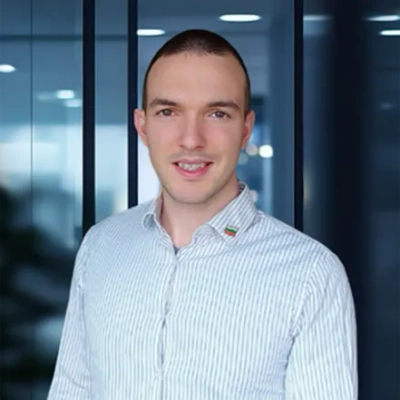 Borets Stamenov
Borets Stamenov
Co-Founder & CEO, SeekFast
Lead Complex Projects with Structured Communication
With a background in project management at a Fortune 100 company, I’ve led a variety of complex projects, often starting from scratch with little to no roadmap. As a project manager, you quickly learn the importance of asking the right questions, reaching out to subject matter experts, and being comfortable working in ambiguous situations while navigating uncertainty to continue driving momentum.
One specific project required a full implementation within just three months and would ultimately impact thousands of applications entering the recruiting process. Staying organized was essential, with daily check-ins, consistent follow-up emails outlining action items, and close coordination across multiple teams. I was responsible for assigning ownership, monitoring progress, and adapting quickly when challenges arose to ensure deadlines were met. That experience sharpened my ability to lead under pressure, communicate effectively, and deliver results at scale.
I’ve since carried those same skills into entrepreneurship by developing structured project plans, identifying key partners, and staying focused on timelines and budgets, which contribute to steady growth and sales.
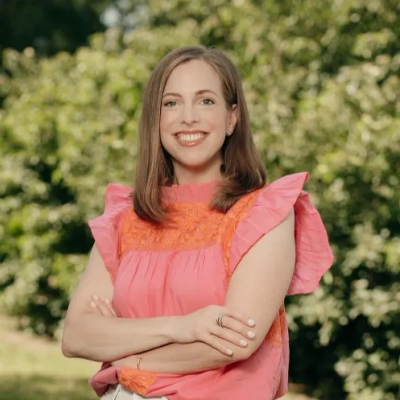 Rebecca Paxton
Rebecca Paxton
Co-Founder & Managing Partner, My Front Porch
Boost Productivity Through Creative Problem-Solving
As a CEO, my knack for creative problem-solving has been quite productive, and I have recognized this over a period of time. When our team faced tight deadlines for a large custom order, I identified my strength in efficient workflow design.
I reorganized our production process, introduced new tracking tools, and empowered my team with clear roles. This not only delivered the order ahead of schedule but also
boosted morale and collaboration.
I’ve learned to recognize my strengths by reflecting on past successes and by connecting the dots of the solutions to the major issues we faced. Also, seeking team feedback and then using those insights to drive results has always been a crucial step I have taken and will continue to do so in the future.
 Nir Appelton
Nir Appelton
CEO, Adorb Custom Tees
Empower Teams with Visual Decision-Making Tools
When we noticed a pattern of delays in internal approvals, I created a “decision map” for the team. It visualized who owned what, where reviews stalled, and how timelines actually moved. Just that clarity helped reduce bottlenecks and empowered more independent decision-making across junior staff. Projects started closing faster without more oversight.
My strength in visual communication came from constantly trying to make ideas understandable to others. I rely on diagrams, checklists, and shared frameworks to guide people without needing constant handholding. That habit helped teams feel confident rather than dependent, which transformed how we delegate. The map still resides in our Notion space today.
 Marc Bishop
Marc Bishop
Director, Wytlabs
Align Multi-Channel Strategies for Improved ROI
We had a multi-channel client who was not seeing ROI alignment between organic, paid, and lifecycle campaigns. I pulled all historical data and presented a customer journey alignment matrix that reframed our goals. We then adjusted targeting, copy, and offers by lifecycle stage and channel priority. ROI grew consistently, and our team operated with more cohesion.
I have always been good at zooming out and noticing when everyone is solving the wrong problem. I realized early on that pattern disruption is my skill; I question defaults others ignore. That mindset has helped me build better strategies and clearer briefs across departments. That project reminded me that strategic clarity often outperforms brute effort.
 Vaibhav Kakkar
Vaibhav Kakkar
CEO, Digital Web Solutions
 Janae Johnson
Career Strategist, Business Coach & Talent Acquisition Leader, JNL Career Services & CorpreneuX
Janae Johnson
Career Strategist, Business Coach & Talent Acquisition Leader, JNL Career Services & CorpreneuX
 Mitch Johnson
CEO, Prolink IT Services
Mitch Johnson
CEO, Prolink IT Services
 Steve Morris
Founder & CEO, NEWMEDIA.COM
Steve Morris
Founder & CEO, NEWMEDIA.COM
 Adrian James
Product Manager, Featured
Adrian James
Product Manager, Featured
 John Pennypacker
VP of Marketing & Sales, Deep Cognition
John Pennypacker
VP of Marketing & Sales, Deep Cognition
 Gianluca Ferruggia
General Manager, DesignRush
Gianluca Ferruggia
General Manager, DesignRush
 Nick Henault
Managing Director, BlueLion 1031
Nick Henault
Managing Director, BlueLion 1031
 Stephen Greet
CEO & Co-Founder, BeamJobs
Stephen Greet
CEO & Co-Founder, BeamJobs
 Jason Hennessey
CEO, Hennessey Digital
Jason Hennessey
CEO, Hennessey Digital
 Anupa Rongala
CEO, Invensis Technologies
Anupa Rongala
CEO, Invensis Technologies
 Brooke Colglazier
Marketing Manager, Spacebase
Brooke Colglazier
Marketing Manager, Spacebase
 Sahil Kakkar
CEO / Founder, RankWatch
Sahil Kakkar
CEO / Founder, RankWatch
 Sahil Gandhi
CEO & Co-Founder, Blushush Agency
Sahil Gandhi
CEO & Co-Founder, Blushush Agency
 Borets Stamenov
Co-Founder & CEO, SeekFast
Borets Stamenov
Co-Founder & CEO, SeekFast
 Rebecca Paxton
Co-Founder & Managing Partner, My Front Porch
Rebecca Paxton
Co-Founder & Managing Partner, My Front Porch
 Nir Appelton
CEO, Adorb Custom Tees
Nir Appelton
CEO, Adorb Custom Tees
 Marc Bishop
Director, Wytlabs
Marc Bishop
Director, Wytlabs
 Vaibhav Kakkar
CEO, Digital Web Solutions
Vaibhav Kakkar
CEO, Digital Web Solutions

